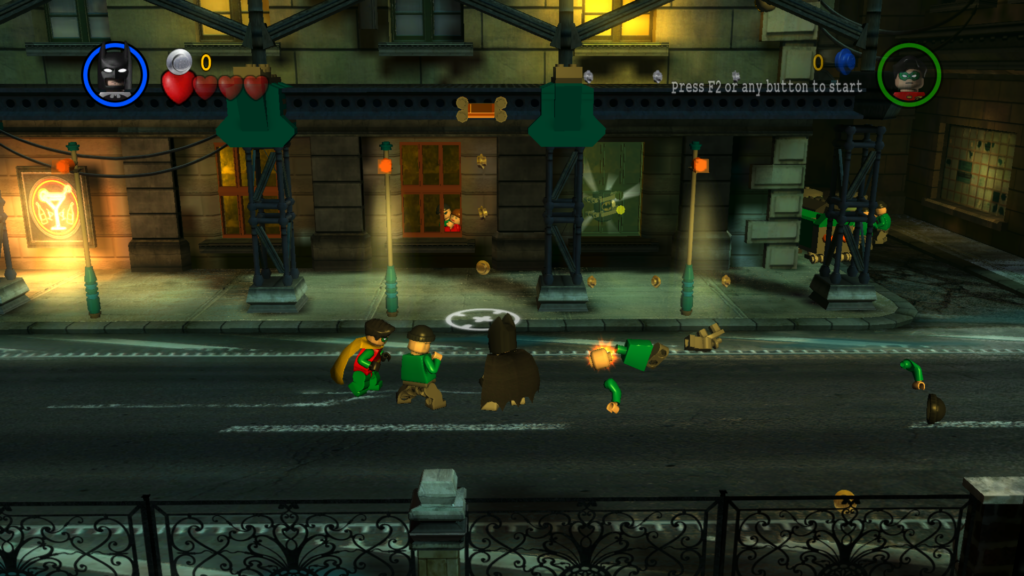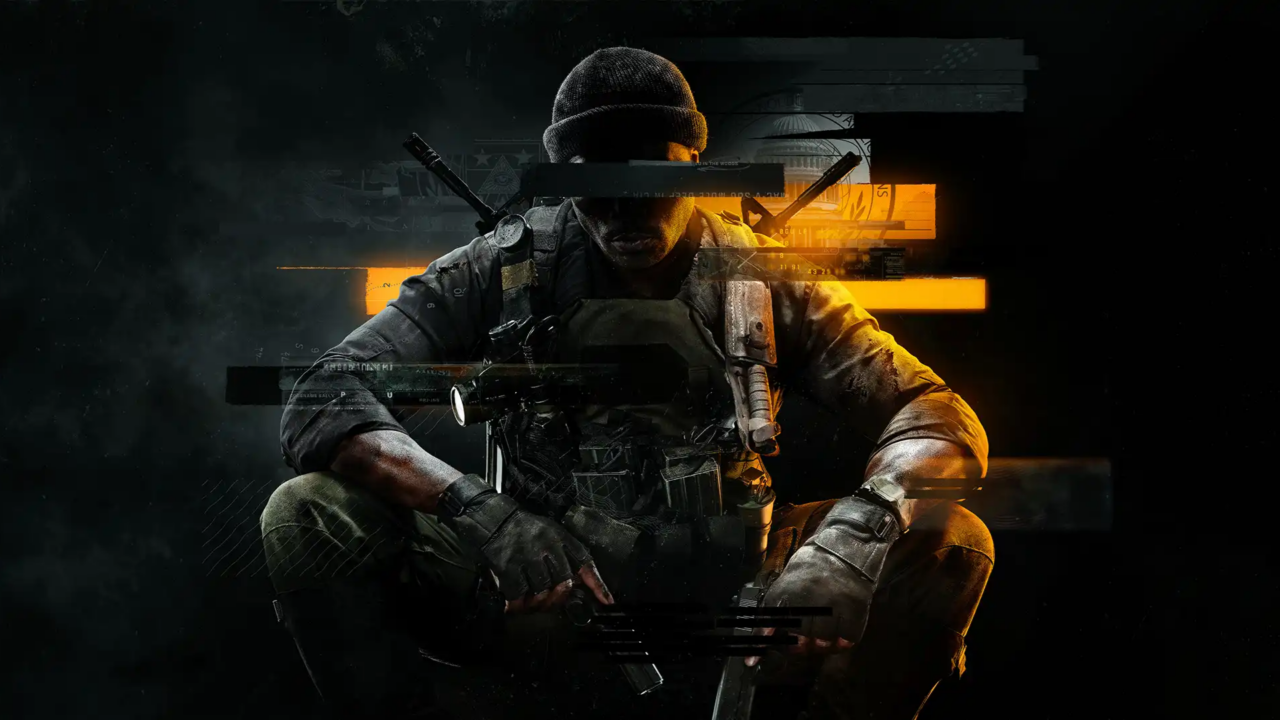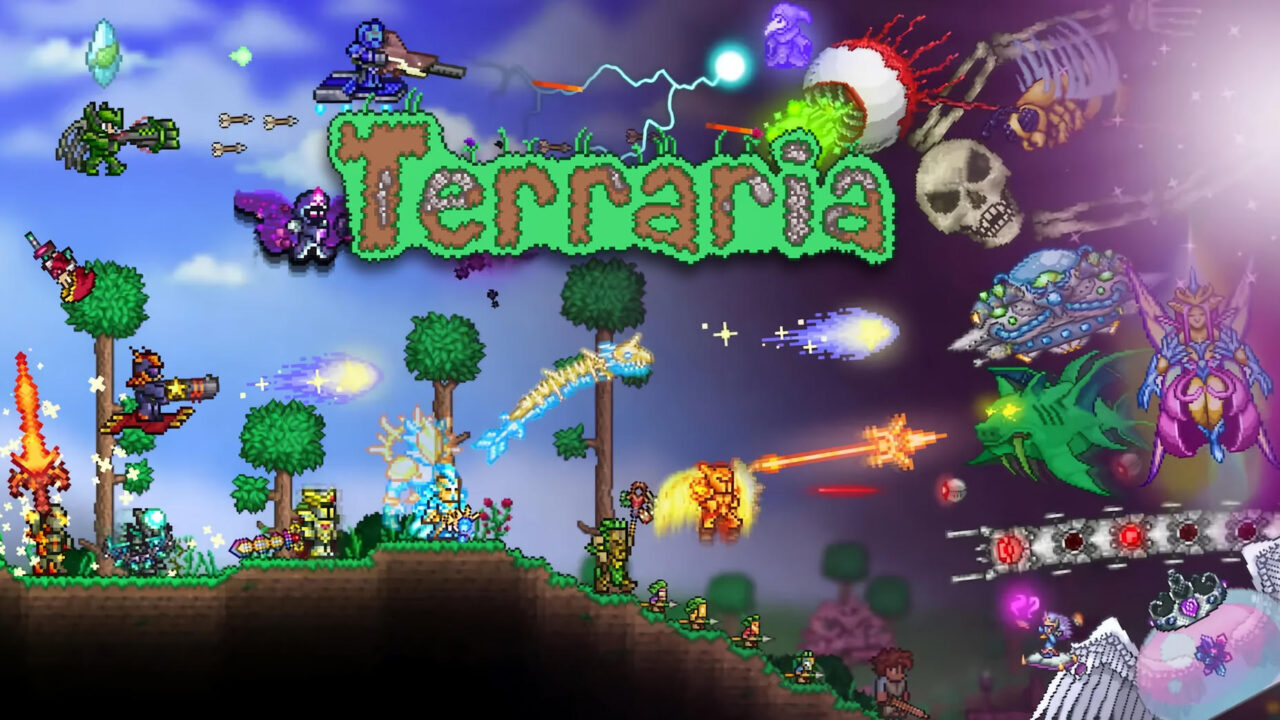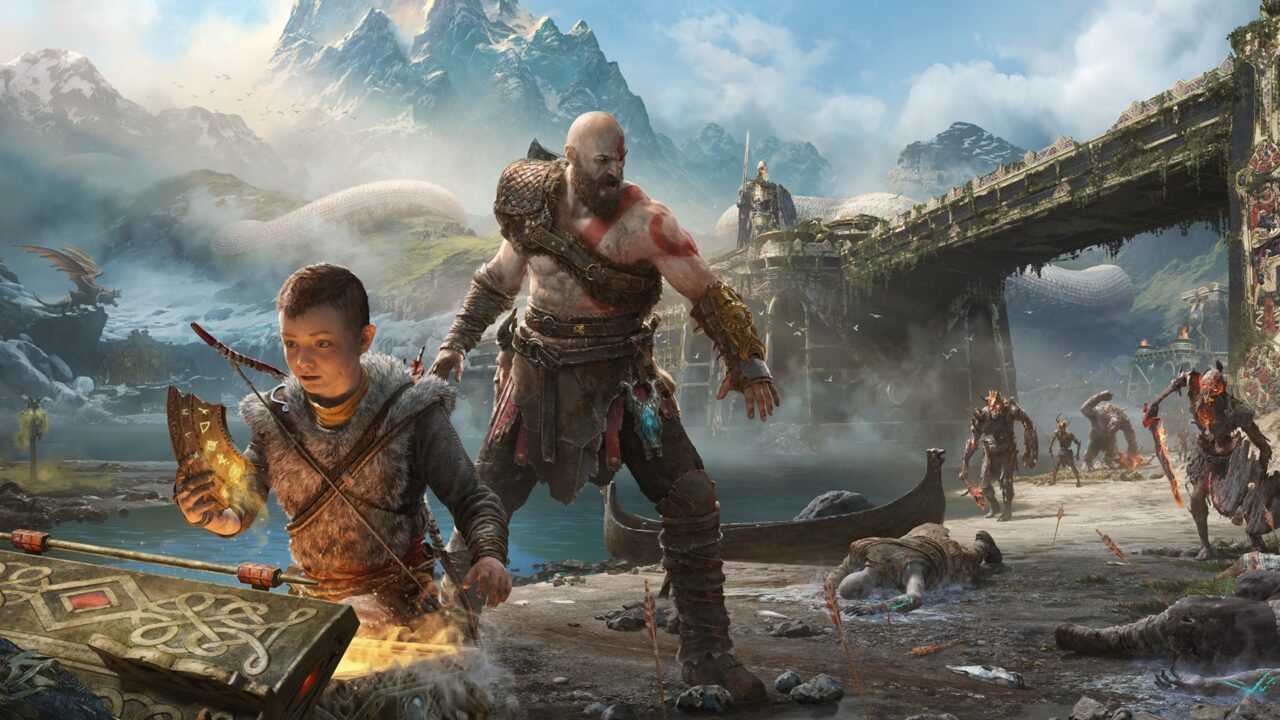It’s 2010. The dark and dingy streets of Gotham are quiet, but for a group of three goons in beanies, conducting their shady business under the cover of darkness, Suddenly, the cuboid figure of Lego Batman drops down and proceeds to beat them into little pieces. Justice is served, and the city is safe once again.
It’s been a long time since I first played what is widely considered to be one of the all-time classics, Lego Batman: The Videogame. More than ten years would be my guess. I came back to it now to see how the nostalgic memories I have of it hold up in 2024.
As a disclaimer, I have taken into account the fact that this game is technically for children and that I am, unfortunately, not a child anymore. However, I don’t think this affected my experience negatively at all.
Originally, I played the fourteen-year-old game on the Wii. It was unproblematic then, but I have to say the move to Xbox 360 (via Xbox Series X backwards compatibility) was a massive upgrade, especially controls-wise.
Before I started my replay, my memories of the game were of chaos and hilarity throughout, as well as some genuinely challenging puzzles and boss fights. I also had a vivid recollection of the iconic musical compositions of Danny Elfman, which made every level feel like some superhero epic.
Lego Batman did not disappoint.
The experience begins with something very few games can pull off: an engaging main menu sequence. It really immerses you into the silly idea of a Lego superhero operating in this dark, depressing city and first introduces you to the famous theme tune from Tim Burton’s 1989 Batman film.
This cinematic also demonstrates one of the key aspects of the Lego videogame series: the realistic backgrounds and level architecture. I assume it’s to cut corners with animation and design, as only the interactive objects and characters are made of Lego, but it takes very little away from the scenes.
In fact, it probably serves the atmosphere more than anything, allowing fans to recognise the Gotham City that we’ve come to know so well.
Before we get onto discussing the gameplay itself, there’s another beloved part of Lego games that elevates their enjoyability: the lack of voice acting. Unfortunately, this feature has since been done away with, despite being converted to an extra optional feature in the more recent games.
Related Articles:
Related Articles:
This might sound more like a negative, but it’s intended to double down on the idea that the characters are Lego figures, and it does so in a funny way when paired with some slapstick physical comedy. Hitting an enemy results in some very amusing yelps and cries.
For example, the first cutscene shows the villains breaking out of Arkham Asylum and causing chaos on the streets. The sequence needs no dialogue, and even the part where the Riddler explains his plan is conveyed using only grunts and points of his question mark-tipped cane on a map.
Somehow, I understood it all and even laughed out loud at some of Clayface’s mute, idiotic antics.
The game itself is split into three chapters, each named after one lead villain from Batman’s iconic rogues’ gallery: The Riddler, The Penguin, and The Joker. Within each chapter are five levels, where the player must take on another of the Caped Crusader’s enemies who are working for their aforementioned bosses.
These chapters are the perfect length for a children’s game, allowing you to explore a number of unique locations and fight some unique enemies. You can complete a whole chapter in the time you’ll have after school or before tea time.
Although the levels are short, they contain a number of distractions and puzzles (that I’m convinced I found more difficult as a kid) before you get to the final bosses, adding to the playtime.
All the main missions begin with a short screen of context. An interesting inclusion, but not an unwelcome one. It explains the origins of whichever villain you’ll be fighting and showcases their design and animations.
A personal highlight of the Lego Batman series for me is the character design. Their commitment to the classic, silly, colourful costumes from the earlier comics is perfect for this kind of game and really adds personality to the otherwise bleak Gotham landscape.
The first level introduces you to the world and the mechanics in a fairly holistic way, although I noted that there was far less handholding than I’d expected. You’re occasionally greeted by an on-screen hint, but you’re mostly encouraged to discover what does and doesn’t work for yourself.
The puzzles are not particularly difficult (although they are still satisfying to complete), requiring you to deduce which abilities are necessary for certain actions. Many such abilities are specific to certain unlockable characters but are also available via the wide array of alternative suits available to both Batman and Robin.
The unlockable suits of the two protagonists solve a number of problems, despite the fact that you are unable to switch to any other characters for the duration of the story mode. Experiencing all of the interesting designs and individual powers of the suits is cool (shoutout to Robin’s Hoover suit), but it ultimately feels limiting when there are so many great characters in the extended roster to choose from.
Lego Batman’s combat is not complicated. A simple button press will see any oncoming goon dispatched, usually in only one hit. If you’re lucky, you’ll sometimes get a special animation. A well-timed parry sees an enemy flipped over the shoulder or choke-slammed into the concrete.

The enemies can be a little relentless, however, often appearing in large numbers and in endless waves as you try to figure out the next puzzle. Their uncharacteristically accurate firearms can also result in a few unnecessary player deaths.
Despite this, Lego Batman feels ruthlessly efficient and capable in melee and at range, something that feels very in-character and provides a very satisfying power trip for the player.
You’d probably be surprised by the graphical quality of the game considering its age (and everything being made of Lego). The cutscenes are absolutely starved of pixels, but in the in-game engine itself, I barely noticed any inadequacies.
Now, if you’re anything like me, you can’t help destroying literally every object in sight to collect the shiny studs that spill out. It’s a right of passage when playing a Lego videogame. Hoovering up enough currency in a level earns you “Super Hero” status, something I feel compelled to get every time just so that I can hear that beautiful ticking sound that plays as the counter fills to completion at the top of the screen.
The only real complaint that I have with Lego Batman comes from attempting to wrestle with the controls of some of the vehicular gadgets. Robin’s Technology Suit comes with a remote control drone or car that is nigh impossible to turn, making manoeuvring it in the precise puzzles and confined spaces that it so often finds itself in far too difficult.
Contrary to the fifteen-point turning circle of Robin’s high school science project, Batman’s choices of transport have the opposite problem: they turn too fast.
Don’t get me wrong, chasing down Two-Face’s truck in the Batmobile was the most fun I had in the whole game. You would not believe how cool it feels to drift around the streets of Gotham (intentionally or otherwise) at speeds high enough to earn a beating from Batman himself. There were no consequences for flying off track during such missions, but any activities requiring precision and finesse took far longer for me than they had any right to. This made the majority of these sections some of the most fun, but also the most frustrating parts of the game.
It’s also definitely worth mentioning the ”hub-world” of the game: The Batcave. It’s an explorable space to hang out in between missions and a surprisingly immersive experience, complete with waterfalls, Lego bats, and a perfectly damp atmosphere.
From here, you can access Lego Batman’s vehicles, which act as entrances to each chapter of the game when you climb into them and blast off into the next level, just like in Batman: The Animated Series.
A short trip upstairs in the Batcave will allow you access to the Batcomputer, where you can access all of the game’s extra features via the screen. It’s also where you can access the villain’s hub, Arkham Asylum. More on that later.
It’s probably about time we covered the actual story of the game, which is a personal highlight for me. It’s not deep or meaningful, and it’s certainly not particularly ambitious, but it does something that very few games do: it gives ample time to all its characters (except one) and manages to make each level feel unique, despite there being so many of them.
The decision to give each villain an individual run-out against the bat and the team-based evil plans make ticking off each mission one-by-one extremely satisfying. The plot itself doesn’t really establish any massive threat, but it does a good job of making Gotham feel overwhelmed by the crime sprees.
Only one character’s contribution upset me enough to complain about it: Bane’s. One of my favourite adversaries of the Caped Crusader was done dirty here. Not only does he not get his own level in Penguin’s chapter (Two-Face gets two!), he simply appears in prison during the final cutscene as if I had defeated him just like the rest.
It is later established that he was caught by police almost immediately after breaking out of Arkham. In my opinion, it’s a terribly disrespectful mishandling of one of Batman’s strongest foes. But on the other hand, it is just a Lego game, so it’s really not that deep.
The boss fights throughout the story are generally fairly challenging, and not just beatdowns either. There’s usually a thought-provoking puzzle to be completed to allow you access to the villain first, and then the beatdown occurs.
One of them was so horrendously awful, however, that it deserves its own mention.
Picture trudging through the sewers, fighting off goons in scuba suits, and swimming with (presumably radioactive) crocodiles to reach your quarry, only to be greeted by this: A notoriously dangerous half-reptilian man is cowering in a space the size of an en-suite bathroom.
He’s stood amongst a pool of deadly toxins and surrounded by discarded shopping trolleys and debris. You can’t reach him for fear of being hurt by the toxins, but how does he choose to fight you? His dastardly mind concocts a strategy of hurling trolleys at you until he realises its futility, then emerges from the safety of the toxins and receives an unrivalled kicking.
The whole ordeal takes about one minute, and it is by far the least interesting boss fight in this game.

Lego Batman also has an outstanding amount of extra content. The fact that the developers went to the effort of creating a separate, parallel storyline complete with the same number of levels where you can play as the villains (mentioned earlier) is one of my favourite things about this game. The missions add so much personality and character depth to Batman’s enemies and fill in some missing context (like Bane’s disappearance).
It also provides the Arkham Asylum “hub world,” where you can create new custom characters (one of my favourite things about Lego games). Although this particular character creator is very fun to play with, it’s also very limited. It’s a struggle to create anything that looks like it belongs in the world.
It’s also worth touching on Free Play, a staple of the Lego game series. Free Play allows you to replay all of the levels over again, this time with access to all of the characters and vehicles that you have unlocked throughout the game. It’s intended for the completionist, as many of the levels in Story Mode had puzzles in them that could not be solved without unlockable characters. It’s a fun way to keep the game alive after the story is finished.
It’s time to rate this game.
I had such a fun experience replaying this game. Its mechanics and gameplay have held up over the years. Despite not being sophisticated, they’re still smooth and satisfying. The game’s graphics leave something to be desired, but only as they’ve aged. They’re actually pretty good for a fourteen-year-old release. The tone and humour are very fun, even ten years later. I genuinely laughed out loud a few times.
However, the highlight of the whole thing has to be the characterization of each villain. They’re each caricatures of their comic book counterparts, leaning heavily into their personality traits to fill the gap left by a lack of dialogue and creating some hilarious moments and interactions. Killer Moth being drawn to every light source or Catwoman being lured to jail by a bowl of milk stand out as the best examples of this.
What this game did, whether intentionally or not, is something not even some major producers have been able to replicate. It created an immortal iteration of the Batman character that stands on its own. High praise for a Lego game, I know, but it deserved it.
If you played this game as a child, I urge you to revisit it, provided the simplicity doesn’t bother you. I can’t speak for anyone who’s never played this, but if you haven’t, everyone should try it once if they get the chance.
I give this trip down memory lane a 9/10. Outstanding. Everything I remembered it to be.






